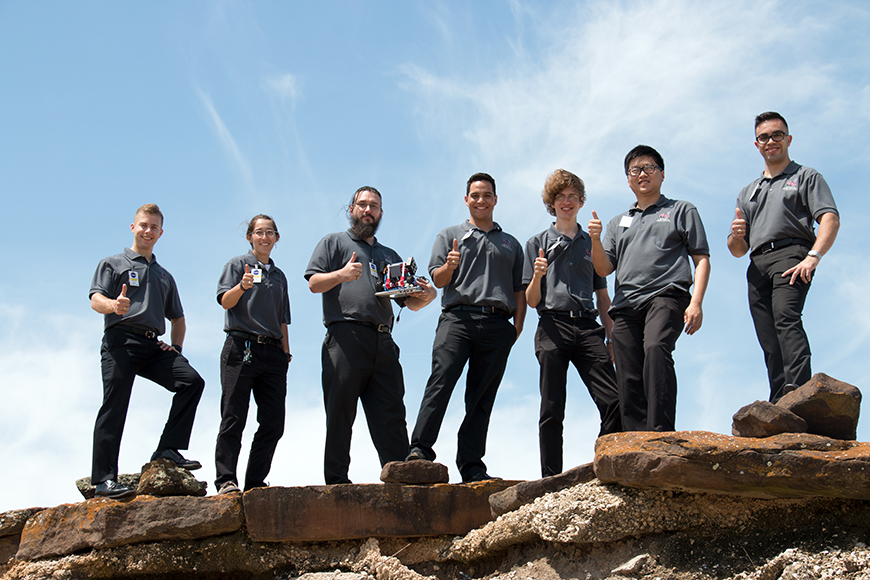
A Texas A&M University undergraduate capstone design team named Enclave Electronics International recently presented their internet of things (IoT) lunar rover prototype to scientists at the NASA Johnson Space Center in Houston, Texas.
In short, NASA scientists were thrilled and said that the technology could possibly be used in a future moon mission.
The students used the Digital Systems Teaching and Research (DSTR) robot to develop a lunar rover prototype that can collect lunar samples while being controlled through the internet.
The student team is comprised of 10 members, six from the Department of Engineering Technology and Industrial Distribution’s Electronic Systems Engineering Technology ( ESET) program in College Station and four from Texas A&M University at Qatar in Doha.
College Station members include Matthew Greco, project manager, Erin Prucha and Ryan Sharpe, hardware engineers, Jonathan Presley and Xuan Gao, software engineers, and Matthew Johnson, system integration engineer. Salvadore Echeveste Jr. from the Manufacturing and Mechanical Engineering Technology ( MMET) program assisted with the project as well.
Qatar members include Bilal El Assadi, Mohammed Jaffrin, Abdul Rafey Siddiqui and Abdelghaffar Abdelrahman.
Bringing it all Together
Despite being separated halfway around the globe, the College Station and Qatar students utilized technology such as video conferencing and 3-D printing to communicate with one another to build a complete rover. The College Station team took on the electronics side, while the Qatar team focused on the mechanical aspect.
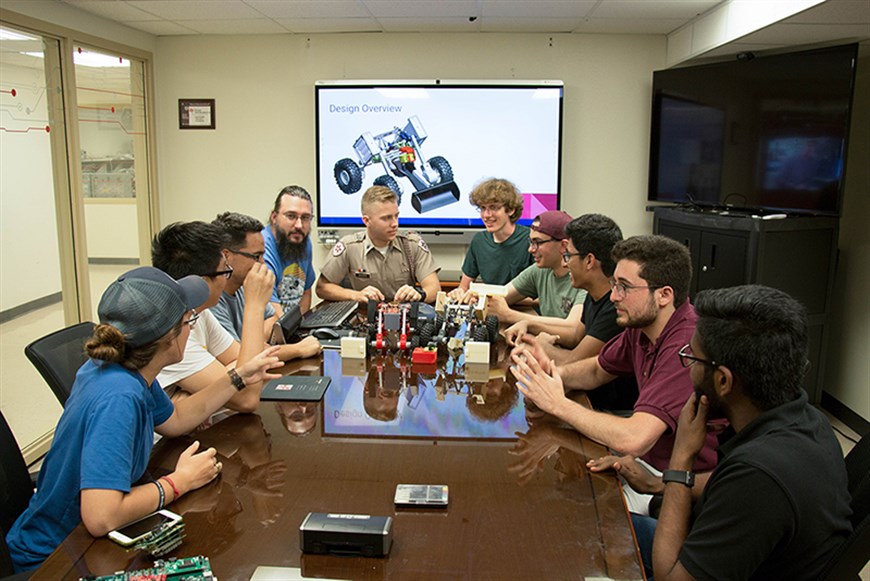
Students from the Qatar team were eventually able to travel and meet the College Station team face to face and finalize their project. Amidst working hard for their NASA presentation, the united team also went to an Aggie baseball game, toured the university and enjoyed some local food.
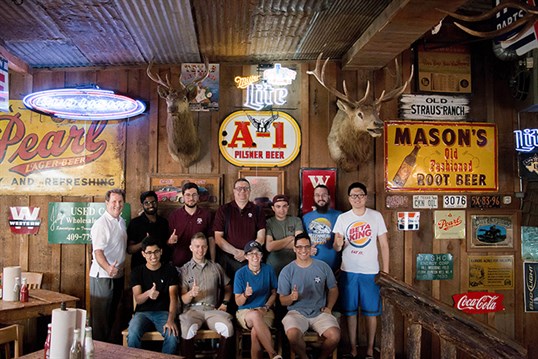
Finally able to collaborate in person, the Qatar team shared their mechanical build with the electronics portion the College Station team had worked on. Together, they created a functioning DSTR lunar robot prototype with internet of things capability that could potentially be sent to the moon to collect samples for NASA
Off to Houston
In Houston, the united team presented their project to leadership from Tietronix Software Inc., a company that develops and delivers “complex, mission-critical systems to NASA’s space flight operations continuously.”
Several other industry representatives attended the presentation, including scientists from NASA and leadership from Texas Instruments (TI) and Texas Space Technology, Applications and Research (TSTAR). The NASA scientists were particularly impressed with the project, given the low-cost aspect of the rover combined with its ability to maneuver diverse terrain.
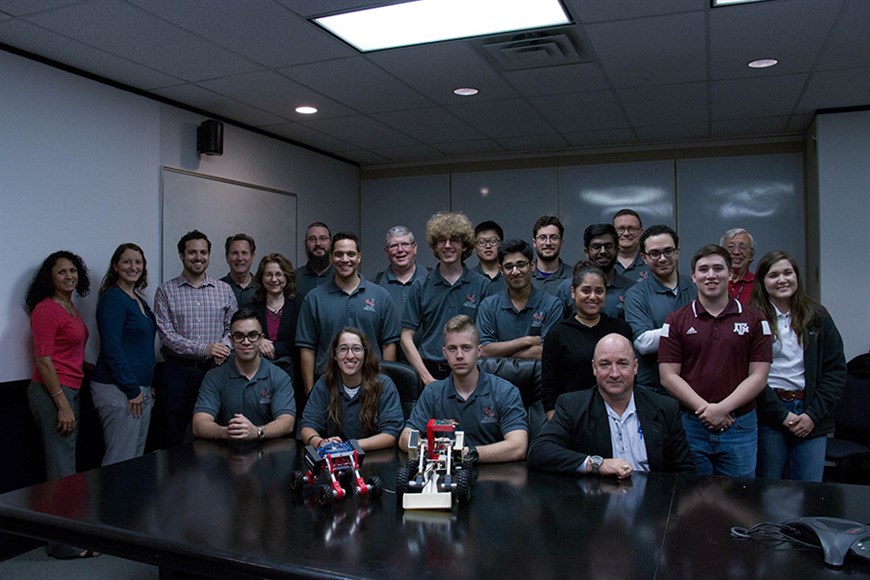
“This is a really powerful concept,” said NASA scientist Dr. Marc Fries. “This is potentially transformative."
“Right now, if you want a [lunar] sample, you either have the option to send an expensive lander with lots of equipment but no movement capability, or send a very large and also expensive rover. This [DSTR robot] is a really nice middle ground where you can put down a low-cost rover, go get the samples and bring them back.”
Following their presentation, the team spent a great deal of time asking and answering questions and discussing the future impact of the project.
In a bittersweet moment, the College Station team had to say goodbye to the Qatar team, wishing them a safe flight back home.
Next Stop? NASA
After the morning meetings and lunch, the ESET students and representatives from TI and TSTAR traveled to the Johnson Space Center to listen to a presentation from Dr. David Draper, manager of the Astromaterials Research Office, part of the JSC Astromaterials Research and Exploration Science Division at NASA.
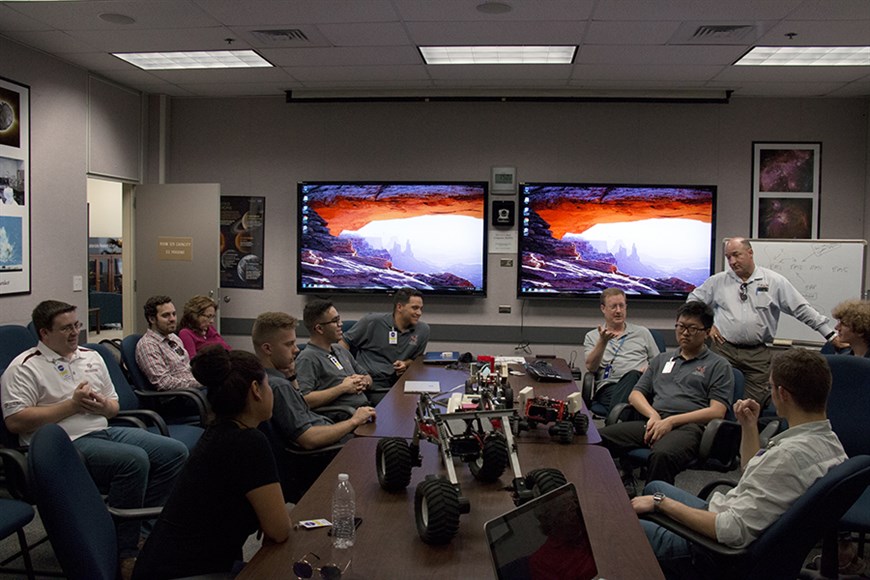
Draper’s presentation gave insight into exactly how the DSTR rover could help NASA with future mission ideas.
Draper explained his team’s project. “We have a mission concept for returning samples from the moon to help us understand some important problems in planetary science,” he said. “Our goal is to try and come up with very innovative mission concept ideas to be selected by NASA’s Discovery Program.”
The Moment of Truth
Following Draper’s presentation, the students were able to visit the NASA Martian and lunar rock fields to test out their robot on space-like terrain.
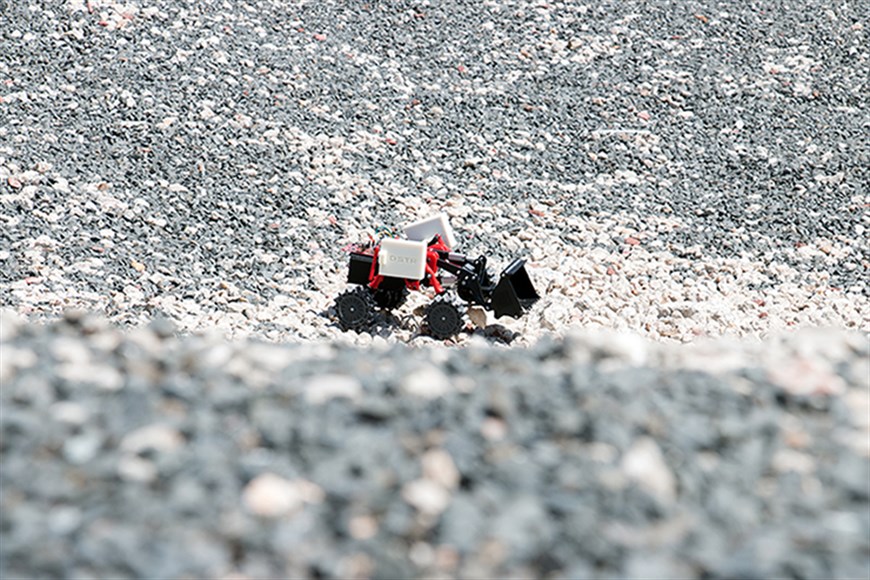
The demonstration was exceptional and the rovers were able to navigate the various terrains with ease.
Draper shared his reaction to the project and excitement for what this could mean for future lunar exploration missions at NASA.
“This kind of work that the Texas A&M capstone team has been doing is very much that innovative, outside-the-box kind of thinking that is really a new way of possibly returning samples from a planetary surface, which is very exciting,” he said.
Draper also expressed his admiration for the accomplishments of the students.
“It’s amazing coming from undergraduates,” said Draper. “I was really, really impressed with how far down the field the ball has been pushed with this group. Hats off!”

“In retrospect, I think the trip was amazing,” said project manager Matthew Greco. “We were stressed at first with meeting the Qatar team for the first time and getting the rover put together with them to prepare for the presentation. In the end, everything went smoothly and everyone had a great time.”
Both senior teams celebrated graduation both in College Station and Qatar with promise of bright futures ahead in engineering.
The ESET program plans to continue development of its internet of things technology projects. Currently, faculty and undergraduate students are implementing internet of things-based systems in applied research, undergraduate education, including freshman engineering and outreach activities.
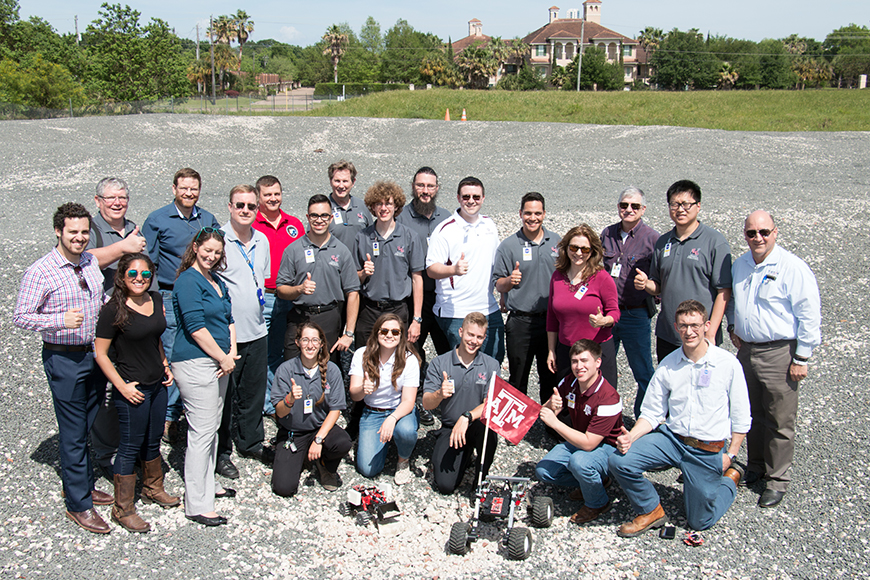
See more photos from the NASA visit.